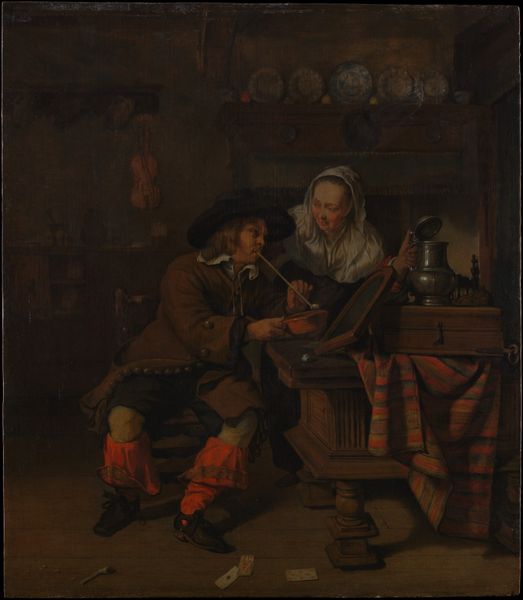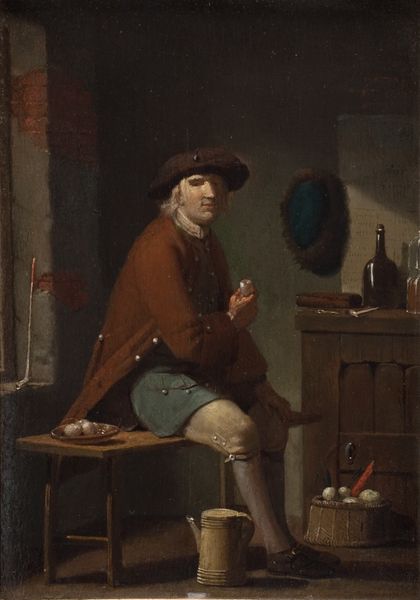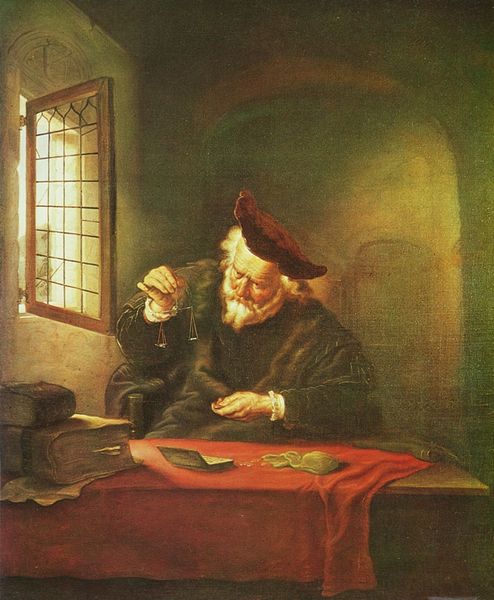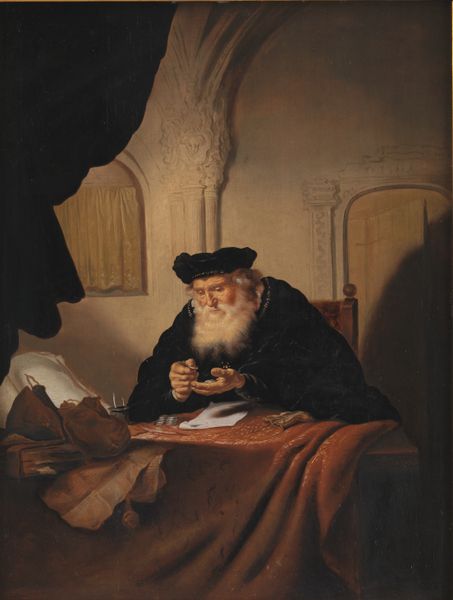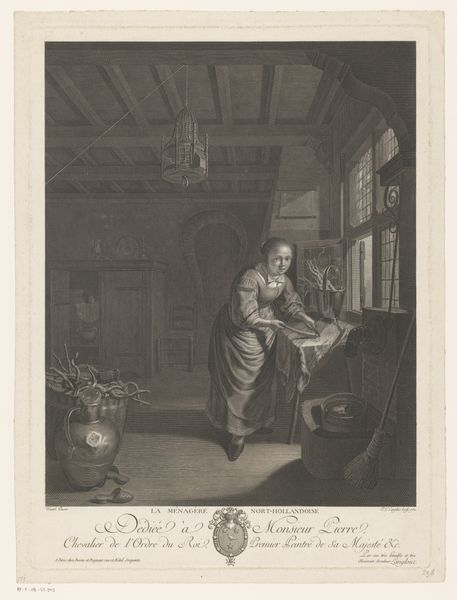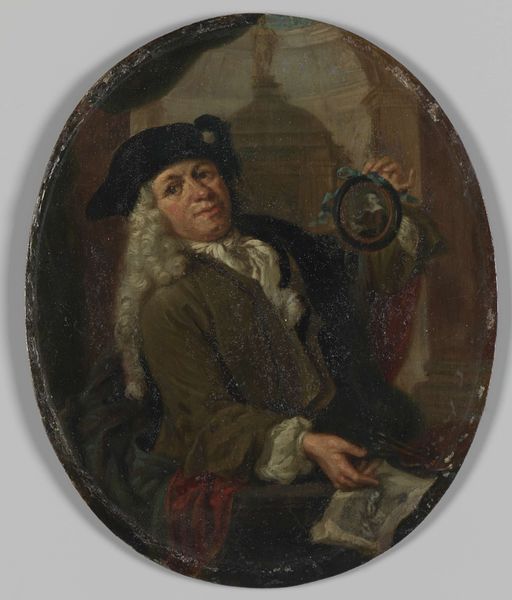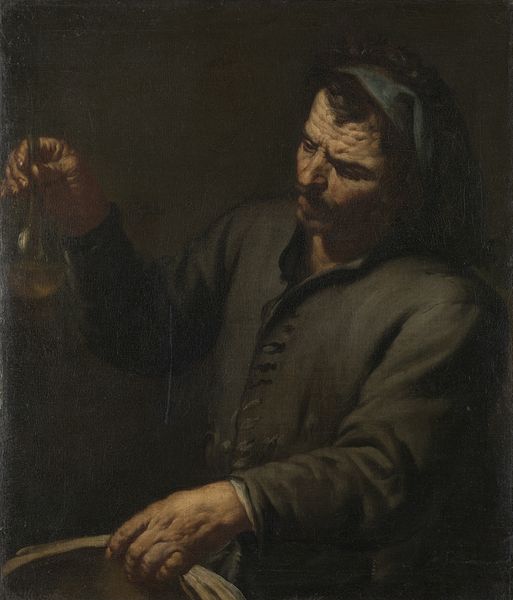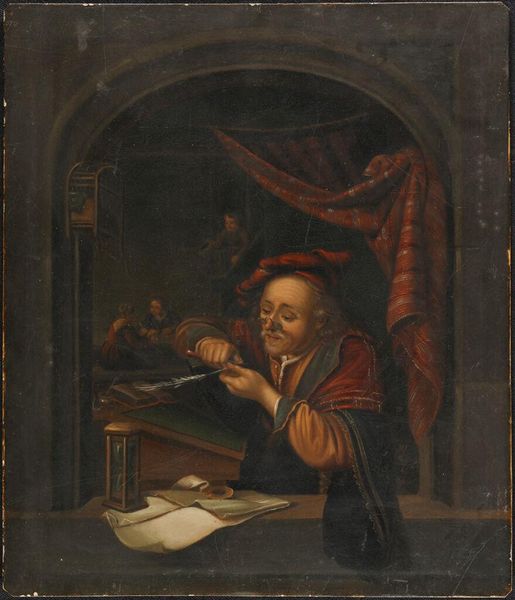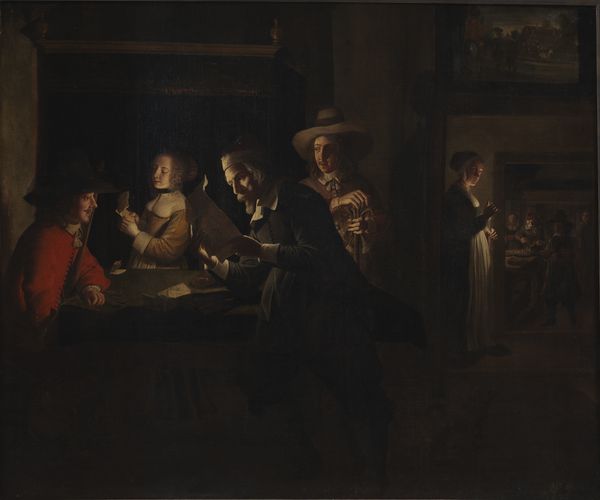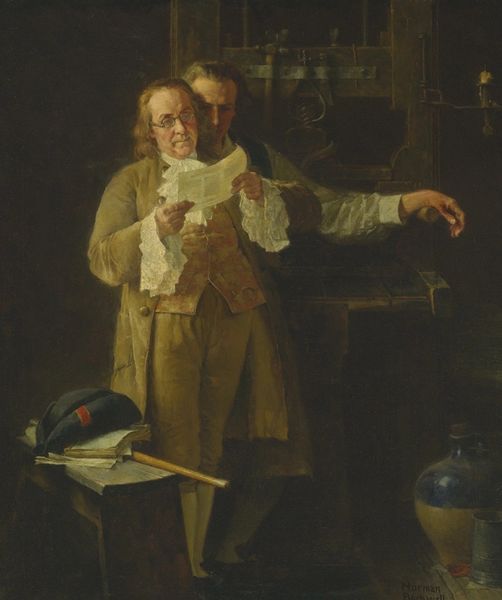
oil-paint
#
portrait
#
baroque
#
oil-paint
#
oil painting
#
vanitas
#
genre-painting
Dimensions: 52.5 cm (height) x 42 cm (width) (Netto)
Editor: So here we have Jan Steen's "The Miser," created sometime between 1641 and 1679. It’s an oil painting and feels very much of the Baroque era to me. It has a very sombre feeling. There's this elderly man counting coins, but also a skeleton staring in through the window. It seems like a classic vanitas piece. How do you read it? Curator: Materially, this is a fascinating glimpse into 17th-century Dutch society, particularly how wealth was accumulated and viewed. Look closely at the materiality: the textures Steen achieves with oil paint. The fabrics, the glint of the coins, the parchment… Each element tells a story of production, trade, and the burgeoning mercantile culture. Do you see how Steen links the tools and processes of material wealth – coins, ledgers – with mortality itself? Editor: Definitely, I noticed how carefully everything seems rendered, but how does that material focus change our understanding of its vanitas themes? Is Steen criticizing the labor involved, or something else? Curator: Precisely! It is less about pious admonition, and more of an exploration into how earthly efforts were expended in contrast to ideas of death, afterlife, decay, and the end of an object’s life. Steen challenges the easy dichotomy of sacred and profane. Note how even the skeleton is materially rendered, part of the same world of labor and production as the miser himself. This wasn’t a world neatly divided; spirituality and profit could occupy the same space. Editor: That's a really interesting point, this interplay makes it much less preachy, and far more human. I guess the material focus also underscores the very tangible realities of economic life during the Dutch Golden Age. It’s definitely much richer than a simple morality tale. Curator: Exactly. Considering what we know about how things are manufactured and how they decay helps deepen an understanding of these vanitas symbols. The art doesn't float detached from tangible concerns.
Comments
No comments
Be the first to comment and join the conversation on the ultimate creative platform.


